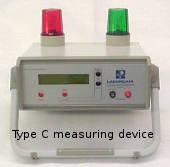|
|
Safe Working Load of FIBCs - a lottery
| Manufactured products must be safe enough to ensure the protection of persons and the environment. The greater the risk of failure, the higher are the demands for safety. As far as Flexible Intermediate Bulk Containers are concerned, all national and international standards prescribe that FIBCs, according to their categories, must be capable of carrying in laboratory tests five-fold, six-fold or eight-fold the filled weight to be transported. All parties involved must take heed of these safety factors: manufacturers within the framework of product development and quality assurance; users in accordance with their demands for orders and deliveries; and testing institutions with regard to the certification of FIBCs. To reach the test loads defined by the safety factors, manufacturers must give careful consideration with regard to the construction of the FIBC and to the materials used. In the last analysis, such considerations are always dictated by costs. From this viewpoint, the optimal construction is one which certainly fulfils these demands but does not unnecessarily exceed them. Certainly "fulfil" means that for purposes of certification no "golden" specimens should be submitted and that the manufacturer knows from his regular quality control the documented strength variation of his products and incorporates this information into his designs. Exceeding safety factors at the end of the day leads to loss of profit margins. For these reasons a lot of manufacturers have their own test rigs. This enables them to test their FIBCs in the course of developing and optimising their products before sending them to a testing institution for certification. Unfortunately, problems very often arise from the fact that the manufacturer's expectations (based on tests performed in his own facilities) deviate substantially from those determined by the testing institution. |
Differences in the test results up to fifty percent (plus/minus!) are not uncommon. These are caused by inadequate test rigs and/or mistakes in the test procedures. This may happen with both parties, on the part of the manufacturer as well as the test house. Problem version 1: The results of the testing institution are not enough to certify the Safe Working Load (SWL) wanted. The consequences are time delay and additional expenses for changing the construction or for using stronger material components. Problem version 2: The results of the testing institution are essentially better than is necessary. Certainly, the required SWL can be certificated under such circumstances, but with the consequence of needlessly high production costs. With a simpler construction or weaker material components the same objective would also have been reached. Interestingly enough, both versions of this problem occur with virtually the same frequency: round about one third of the test orders belong to one category and one third to the other, i.e. in only one third of the tests the expectations of the manufacturer correspond approximately with the results of the testing institution. And yet another extremely worrying fact comes to light: the variations in the two versions of problem described above are different from test house to test house. With some, version 1 predominates, whilst with others version 2 is encountered more often. So certification of SWL becomes a lottery. What lesson can be learnt from this situation? It lies in the interest of the users of FIBC test rigs that they submit their equipment and the results of their tests to critical assessment. If the disparities in test results are too wide, this leads to the problems described and to raising production costs which brings with it the penalty of reduced competitiveness. |
LABORDATA International Materials Testing Institute offers help where needed to the FIBC industry in this matter. As a first step an analysis of the current situation is required. Therefore LABORDATA will organise a worldwide round robin test by inviting all interested parties to participate. In the following months LABORDATA will provide specific information and hopefully persuade some hundred companies to participate in one of the biggest and most interesting global comparison tests of its type yet carried out. Against the background of what has been discussed above, an incident which occurred some days ago in a South American harbour, leaves one not knowing whether to laugh or cry. There a port authority has forbidden unloading of dangerous goods FIBCs for the reason that the Safe Working Load of 1000kg indicated on the UN marking does not take into consideration the tare weight of the FIBCs. The UN marking and the Certificate of Approval should have had to prevent usage on 1003kg! Here the literal interpretation of the appropriate passage from the IMDG code (responsible for shipping transport) section 6.5.2.1.1, obviously had priority over common sense. The same section 6.5.2.1.1 in the ADR (responsible for carriage by road) considers the tolerances belonging inevitably to the production and tests of FIBCs. There one can read: "Each IBC ... shall show ... the maximum permissible gross mass or, for flexible IBCs, the maximum permissible load, in kg. "The last passage of this sentence referring to FIBCs is missing from the IMDG code (probably by mistake) and promptly the brain pauses for thought. If an FIBC should fail by increasing the load from 1000kg to 1003kg (test load from 6000 kg to 6018 kg = +0.3 %) such a bag would be unsafe in principle. Therefore the rules are right to ignore the tare weight of FIBCs. |
Comments are welcome and these may be sent by letter to Dr Kielbassa, c/o INDUSTRIAL BULK WORLD, 25 West Cottages, Off West End Lane, London NW6 1RJ, UK. Alternatively, he can be contacted direct (tel: +49 531 33 9011, fax: +49 531 33 9013; email: This email address is being protected from spambots. You need JavaScript enabled to view it.).
(58)










